Category: Child rearing tips
Establish the habit of spending pattern, Playful learning environment, Reaction to the sex affiance queries, best and successful parenting
About child sleeping schedule
Importance of kids sleeping schedule
A consistent and healthy sleeping schedule is crucial for children’s overall well-being and development. Here are some reasons why:
- Physical Health: A good night’s sleep is essential for physical growth and development in children. During sleep, the body repairs tissues, synthesizes hormones, and strengthens the immune system. Adequate sleep also helps prevent obesity and promotes a healthy metabolism.
- Cognitive Development: Sleep plays a vital role in cognitive function, including memory consolidation, learning, and problem-solving skills. Children who get enough sleep tend to perform better academically and have improved concentration and attention span.
- Emotional Regulation: Quality sleep is closely linked to emotional regulation and mental health in children. Sufficient sleep helps regulate mood, reduce irritability, and improve emotional resilience. Conversely, sleep deprivation can lead to mood swings, irritability, and increased risk of anxiety and depression.
- Behavioral Regulation: A consistent bedtime routine and adequate sleep contribute to better behavioral regulation in children. Well-rested children are more likely to exhibit positive behaviors, such as cooperation, self-control, and empathy, while sleep-deprived children may experience impulsivity, hyperactivity, and difficulty managing emotions.
- Physical Safety: Children who are sleep-deprived are at a higher risk of accidents and injuries, both during the day and while participating in activities. Alertness and coordination are compromised when children are tired, increasing the likelihood of accidents, falls, and mishaps.
- Healthy Habits: Establishing a consistent sleep schedule early in life helps children develop healthy sleep habits that can last a lifetime. Teaching children the importance of prioritizing sleep sets the foundation for good sleep hygiene and overall wellness as they grow older.
- Family Dynamics: A regular sleeping schedule benefits the entire family by promoting harmony and predictability in daily routines. When children have consistent bedtimes, parents can also enjoy more time for themselves or with each other in the evenings, leading to better family relationships and overall satisfaction.
In summary, a consistent sleeping schedule is critical for children’s physical health, cognitive development, emotional well-being, and overall quality of life. Prioritizing sleep helps children thrive academically, socially, and emotionally, laying the groundwork for a healthy and fulfilling future.
How to improve kids sleeping schedule
Improving a child’s sleeping schedule involves establishing consistent bedtime routines and creating a conducive sleep environment. Here are some tips to help:
- Set a Consistent Bedtime: Establish a regular bedtime and stick to it every night, even on weekends. Consistency helps regulate the body’s internal clock.
- Create a Relaxing Bedtime Routine: Develop a calming routine leading up to bedtime. This could include activities like reading a book, taking a warm bath, or listening to soft music.
- Limit Screen Time Before Bed: Reduce exposure to screens (TV, smartphones, tablets) at least an hour before bedtime. The blue light emitted by screens can interfere with the body’s natural sleep-wake cycle.
- Create a Comfortable Sleep Environment: Ensure the bedroom is dark, quiet, and at a comfortable temperature. Use blackout curtains, white noise machines, or earplugs if needed.
- Encourage Daytime Activity: Ensure your child gets enough physical activity during the day, but avoid vigorous exercise close to bedtime, as it can energize them.
- Watch Diet and Drinks: Avoid giving your child caffeine or sugary foods close to bedtime, as they can interfere with sleep. Offer a light, healthy snack if they’re hungry before bed.
- Establish Clear Expectations: Communicate the importance of sleep to your child and set clear expectations about bedtime rules. Consistency is key here.
- Be Patient and Understanding: It may take time for your child to adjust to a new sleep schedule. Be patient and offer reassurance and support as they adapt.
- Address Anxiety or Stress: If your child is struggling to sleep due to anxiety or stress, talk to them about their concerns and offer support. Consider relaxation techniques or counseling if needed.
- Consult a Healthcare Professional: If your child continues to have trouble sleeping despite your efforts, consider consulting a pediatrician or sleep specialist for further evaluation and guidance.
By implementing these strategies consistently, you can help improve your child’s sleeping schedule and promote better sleep habits for overall health and well-being.
Dealing with your child emotions
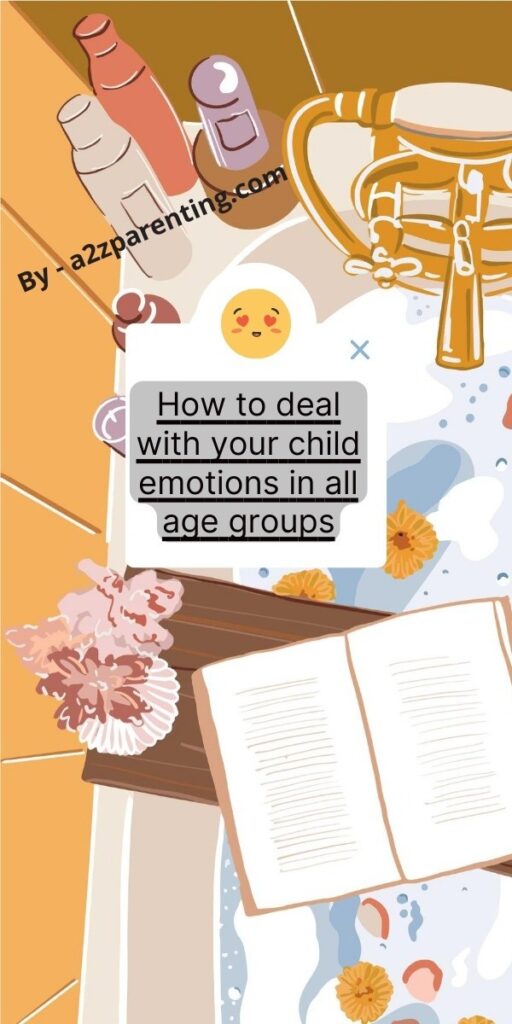
Emotional Regulation
Teaching your child how to manage and cope with their emotions is a crucial aspect of their overall development. By helping them understand and regulate their emotions, you are equipping them with valuable skills that will benefit them throughout their lives. One effective way to teach emotional regulation is through positive reinforcement.
When your child displays appropriate emotional responses, such as expressing their feelings in a calm and respectful manner, acknowledge and praise their behavior. This not only reinforces their ability to regulate their emotions but also encourages them to continue practicing these skills.
Another important aspect of emotional regulation is developing emotional intelligence. This involves helping your child recognize and understand their own emotions, as well as the emotions of others. By teaching them to identify different emotions and their triggers, you are empowering them to respond in a more thoughtful and controlled manner.
Conflict resolution is also a key component of emotional regulation. Teach your child effective communication skills, such as active listening and empathy, to help them navigate conflicts and express their emotions in a healthy way. Encourage them to find peaceful solutions and to consider the feelings of others during these situations.
Lastly, providing emotional support is essential for your child’s mental health. Create a safe and nurturing environment where they feel comfortable expressing their emotions without judgment. Be available to listen and validate their feelings, offering guidance and reassurance when needed. By teaching your child emotional regulation, you are setting them up for success in managing their emotions and building healthy relationships. These skills will serve them well throughout their lives, promoting their overall well-being and happiness.
Understand and manage emotional child
Understanding and managing emotional children is a crucial aspect of parenting and caregiving. It is important to try to understand your child’s emotions by putting yourself in their shoes. This means empathizing with them and trying to see things from their perspective. By doing so, you can build a stronger emotional connection with your child.
One way to understand your child’s emotions is by paying close attention when they talk about their feelings. Listen actively and without judgment, allowing them to express themselves freely. Let your child know that it’s okay to feel the way they do, and that their emotions are valid. This validation helps them feel understood and accepted, which is essential for their emotional well-being.
Once you understand your child’s emotions, it is important to help them manage and regulate these emotions. Teach them healthy coping mechanisms, such as deep breathing or taking a break when they feel overwhelmed. Encourage them to express their emotions in a respectful and constructive manner, rather than suppressing or lashing out.
Additionally, provide a safe and supportive environment where your child feels comfortable expressing their emotions. Create open lines of communication and encourage them to talk about their feelings. Offer guidance and reassurance when needed, and let them know that you are there to support them.
By understanding and managing your child’s emotions, you are helping them develop important emotional intelligence skills that will benefit them throughout their lives. It also strengthens your bond with them and fosters a positive and nurturing relationship.
Raise an emotionally happy child
Raise an emotionally happy child by equipping them with the necessary tools to manage their emotions. One effective tool is deep breathing, which helps children calm down and regain control when they are feeling overwhelmed or upset. Encourage your child to take deep breaths in through their nose and out through their mouth, teaching them to focus on their breath as a way to regulate their emotions.
Another helpful technique is mindfulness, which involves being present in the moment and paying attention to one’s thoughts and feelings without judgment. Teach your child to practice mindfulness by engaging in activities that promote awareness, such as guided meditation or simply taking a few moments to observe their surroundings. This can help them develop a greater sense of self-awareness and emotional regulation.
In addition to these techniques, establishing predictable routines can contribute to your child’s emotional well-being. Routines provide a sense of security and stability, reducing the likelihood of emotional outbursts. Create a daily schedule that includes regular mealtimes, bedtime routines, and designated times for play and relaxation.
Consistency and structure can help your child feel more secure and in control, leading to emotional stability and happiness. By providing your child with these tools and implementing predictable routines, you are empowering them to manage their emotions effectively. This sets the foundation for emotional well-being and happiness, allowing your child to navigate life’s challenges with resilience and confidence.
Manage and help child’s emotional control
Helping a child develop emotional control is an important aspect of their emotional and social development. By teaching them to recognize and name their emotions, you can help them better understand and express themselves. Use words to describe feelings, so they can develop a vocabulary to express their emotions effectively.
Encourage your child to identify and label their emotions by asking questions like, “How are you feeling right now?” or “What emotions are you experiencing?” This helps them become more aware of their emotional state and gives them the language to communicate their feelings to others. Once your child can identify their emotions, teach them healthy ways to manage and regulate them.
Encourage them to engage in activities that help them calm down and regain control, such as deep breathing exercises or engaging in a favorite hobby. By providing them with coping mechanisms, you are empowering them to take control of their emotions in a positive way. Additionally, model emotional control yourself.
Children learn by observing and imitating their parents or caregivers. Show them how to handle challenging emotions by staying calm and using healthy coping strategies. This not only teaches them valuable skills but also creates a supportive and nurturing environment for their emotional development.
By helping your child develop emotional control, you are equipping them with essential skills for navigating life’s challenges. They will be better able to regulate their emotions, communicate their needs, and build healthy relationships with others.
Parenting Tips, Child Emotions, Emotional Intelligence, Child Development, Parenting Challenges, Empathy Building, Positive Parenting, Emotional Support, Parenting Advice, Understanding Children,
How to know kids better at all age groups

Understanding kids of different age groups involves recognizing their developmental stages, interests, and needs.
Here’s a breakdown :-
Infants (0-12 months)
- Communication: They express needs through crying, gestures, and eventually babbling.
- Physical Development: Rapid growth, motor skill development (rolling over, sitting, crawling).
- Bonding: They develop attachment to caregivers, forming secure relationships.
- Sensory Stimulation: Respond to sights, sounds, and touch.
Toddlers (1-3 years)
- Language Development: Expanding vocabulary, beginning to form sentences.
- Independence: Want to do things on their own, but still need guidance.
- Emotions: Struggle with expressing emotions, may have tantrums.
- Play: Engage in imaginative and parallel play.
Preschoolers (3-5 years)
- Imagination: Flourishing imagination and creativity.
- Social Skills: Learning to share, take turns, and play cooperatively.
- Curiosity: Constantly asking questions to understand the world.
- Routine: Thrive on predictable routines and consistency.
School-Age Kids (6-12 years)
- Cognitive Development: Improved problem-solving and critical thinking.
- Peer Relationships: Begin to form friendships and navigate social dynamics.
- Interests: Developing hobbies and interests; may excel in specific areas.
- Emotional Development: Learning to manage emotions and understand empathy.
Adolescents (13-18 years)
- Identity Formation: Exploring personal values, beliefs, and identity.
- Peer Influence: Friends play a significant role in decision-making.
- Independence: Seeking more autonomy from parents and authority figures.
- Emotional Rollercoaster: Experience intense emotions due to hormonal changes.
Tips to Understand Kids Better:
- Active Listening: Pay attention and listen without judgment.
- Observe and Engage: Spend time with them, participate in their activities, and observe their behaviors.
- Ask Questions: Encourage them to express themselves and share their thoughts.
- Respect Their Individuality: Recognize and appreciate their uniqueness.
- Be Patient and Empathetic: Understand that they’re still developing and learning.
General Considerations:
- Developmental Milestones: Familiarize yourself with typical milestones for each age group.
- Communication Styles: Adapt your communication based on their age and comprehension level.
- Respect Boundaries: Understand their need for privacy and personal space as they grow older.
Remember, each child is unique, and factors like environment, culture, and individual temperament greatly influence their development. Flexibility and understanding are crucial when trying to connect with kids of various age groups.
FAQ’s about How to know kids better at all age groups
Understanding kids at different age groups involves recognizing their developmental stages and unique needs. Here are FAQs regarding getting to know kids better across various age ranges:
Infants (0-12 months):
1. How do I understand what my newborn needs?
- Watch for cues like crying (for hunger, discomfort, or fatigue), body language, and facial expressions. Respond promptly to their needs.
2. How can I bond with my baby?
- Engage in skin-to-skin contact, talk, sing, and maintain eye contact during feeding and playtime.
3. What milestones should I look for?
- Milestones include lifting their head, rolling over, babbling, and beginning to sit up or crawl.
Toddlers (1-3 years):
1. How do I manage tantrums?
- Acknowledge their feelings, offer choices, maintain routines, and provide a calm environment.
2. How do I encourage their development?
- Encourage exploration, provide age-appropriate toys, engage in imaginative play, and read to them regularly.
3. What are common developmental milestones?
- Walking, talking, increased independence, and developing basic motor skills.
Preschoolers (3-5 years):
1. How do I handle their curiosity?
- Encourage exploration, answer their questions, and provide opportunities for hands-on learning.
2. What social skills should I focus on?
- Teach sharing, taking turns, and basic problem-solving skills through play and interactions with peers.
3. How can I encourage their creativity?
- Offer art supplies, encourage pretend play, and participate in imaginative activities together.
School-Age Children (6-12 years):
1. How do I support their learning?
- Help with homework, encourage reading, engage in discussions, and support their interests through extracurricular activities.
2. How do I handle conflicts or peer pressure?
- Teach problem-solving skills, promote open communication, and encourage positive friendships.
3. How can I foster independence?
- Give them age-appropriate responsibilities, encourage decision-making, and allow them to learn from mistakes.
Adolescents (13-18 years):
1. How do I communicate effectively with teenagers?
- Listen actively, respect their opinions, and be available for conversations without judgment.
2. How do I navigate their need for independence?
- Set boundaries while granting autonomy, guide decision-making, and provide support when needed.
3. How do I handle challenging behaviors?
- Understand that mood swings and rebellion are common, maintain open communication, and seek professional help if needed.
Understanding kids at different stages involves a mix of observation, empathy, and adapting your approach to suit their changing needs. Always remember that every child is unique, and flexibility is key in parenting or caregiving.
About Smart ways to manage kids screen time
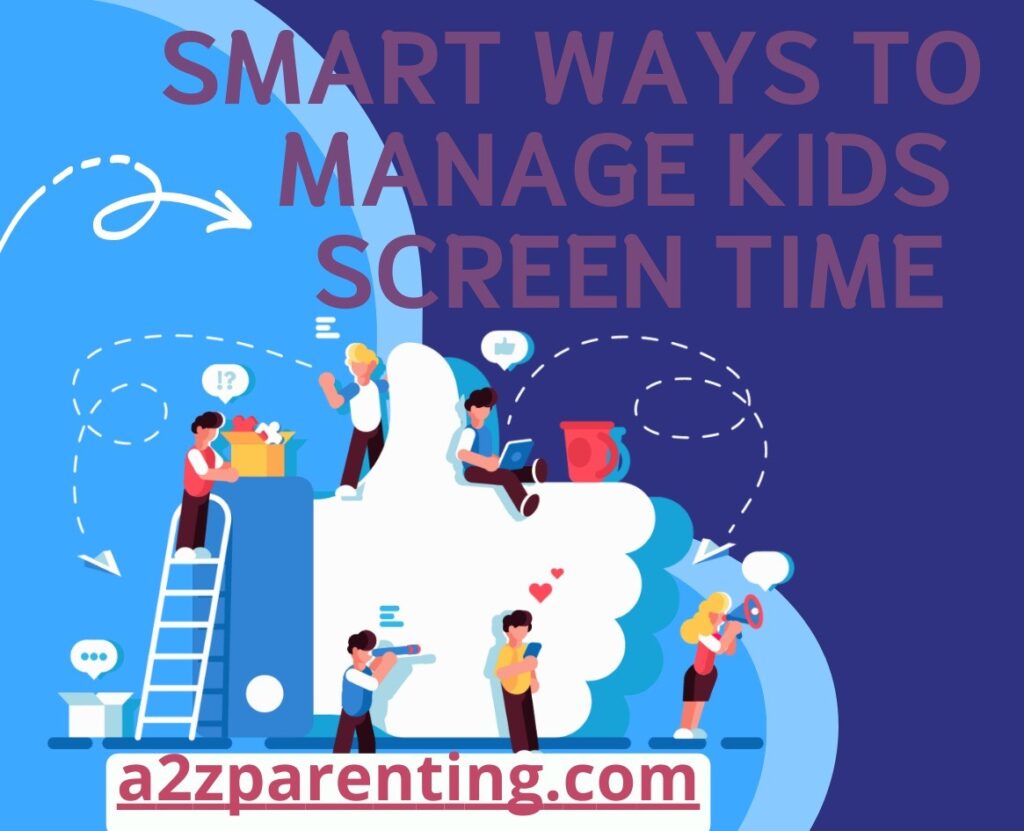
Managing kids’ screen time can be challenging, but there are several smart strategies you can implement to help regulate and balance their usage
Set clear rules – Establish specific guidelines for screen time, including when and for how long screens can be used. Make sure these rules are communicated clearly and consistently enforced.
Lead by example – Children often model their behavior after adults, so demonstrate healthy screen habits yourself. If you limit your screen time, it sends a powerful message to your kids about its importance.
Create tech-free zones and times – Designate certain areas of your home, like the dining room or bedrooms, as screen-free zones. Also, establish times, such as during family meals or an hour before bedtime, where screens are off-limits for everyone.
Use parental controls – Many devices and apps offer parental control features that allow you to set time limits, restrict access to certain content, and monitor usage. Take advantage of these tools to manage and track your child’s screen time.
Encourage alternative activities – Encourage your kids to engage in other activities like reading, playing outdoors, arts and crafts, or playing board games. Offering appealing alternatives to screen time can help reduce their reliance on devices.
Set a schedule – Create a daily or weekly schedule that includes a variety of activities, including screen time, homework, physical activity, and family time. Having a structured routine helps kids understand when it’s appropriate to use screens and when it’s time for other activities.
Use screen time as a reward – Instead of allowing unlimited access to screens, use screen time as a reward for completing chores, homework, or engaging in physical activities. This helps reinforce positive behavior and teaches responsibility.
Engage with your child during screen time – When possible, watch movies, play games, or explore educational apps together. This not only allows you to monitor content but also turns screen time into a bonding experience.
Encourage mindfulness – Teach your children about the importance of being mindful of their screen time. Help them understand the impact excessive screen use can have on their health, sleep, and overall well-being.
Have open conversations – Discuss the reasons behind screen time limits with your kids. Encourage them to ask questions and express their concerns, and collaborate on finding solutions that work for the whole family.
Remember, the goal isn’t necessarily to completely eliminate screen time but rather to find a healthy balance that allows your child to enjoy technology while also engaging in other enriching activities. Flexibility and communication are key in managing kids’ screen time effectively.
Here are some frequently asked questions (FAQs) about managing kids’ screen time along with their answers –
- How much screen time is appropriate for my child? The American Academy of Pediatrics (AAP) recommends:
- For children aged 2 to 5: Limit screen time to 1 hour of high-quality programming per day.
- For children aged 6 and older: Establish consistent limits on screen time that ensure adequate sleep, physical activity, and other healthy behaviors.
- What are some signs that my child may be spending too much time on screens? Look out for signs such as:
- Irritability when not allowed to use screens
- Disrupted sleep patterns
- Decline in academic performance
- Lack of interest in other activities
- Physical symptoms like headaches or eye strain
- Should I completely ban screens or allow limited use? Total avoidance might not be practical or beneficial in the long run. Instead, focus on setting reasonable limits and ensuring that screen time doesn’t interfere with other important activities like homework, physical exercise, and social interaction.
- What are some effective parental control tools for managing screen time? There are various parental control apps and features available on devices that allow you to set time limits, monitor usage, block certain apps or content, and establish schedules. Some popular options include Apple’s Screen Time, Google Family Link, and third-party apps like Qustodio or Norton Family.
- How can I encourage my child to engage in non-screen-related activities? Provide a variety of alternative activities such as outdoor play, sports, hobbies, reading, arts and crafts, or board games. Lead by example and actively participate in these activities with your child to make them more engaging.
- What’s the best way to enforce screen time rules without constant conflict? Consistency is key. Establish clear rules and consequences for violating screen time limits. Also, involve your child in setting these rules to gain their buy-in. Offer incentives for following the rules and be ready to calmly enforce consequences when necessary.
- Is educational screen time okay? Educational screen time can be beneficial, but it’s essential to balance it with other activities. Choose high-quality, age-appropriate content and ensure it doesn’t replace essential activities like physical exercise, social interactions, or sleep.
Remember that every child is different, so it’s crucial to adapt these strategies to fit your child’s needs and your family’s dynamics. Regularly reassess and adjust screen time rules as needed based on your child’s development and any changes in technology or circumstances.
Promoting a growth mindset in children
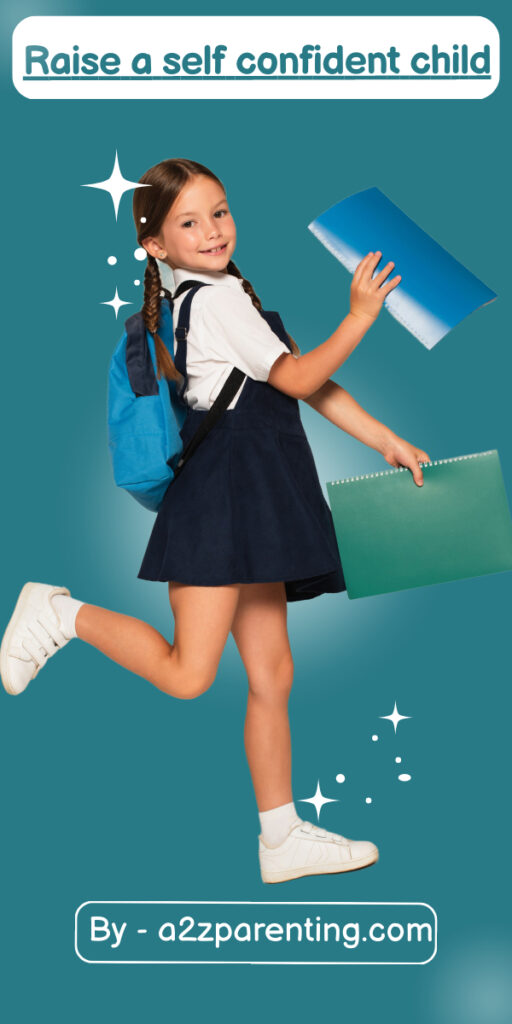
Promoting a growth mindset in child involves creating an environment that fosters their sense of worth, competence, and independence. It is essential for their development and success. A growth mindset encourages the belief that abilities and intelligence can be developed through effort, learning, and perseverance.
Strategies to help in promoting a growth mindset in children
- Unconditional Love and Acceptance: Show your child love and acceptance regardless of their successes or failures. Make sure they know that your love is not based on their achievements.
- Encourage Autonomy: Allow your child to make age-appropriate decisions and choices. This helps them develop a sense of control and independence.
- Praise Effort, Not Just Results: Focus on praising the effort your child puts into tasks, rather than solely the outcome. This teaches them that hard work is valuable.
- Set Realistic Expectations: Set achievable goals that match your child’s abilities and developmental stage. This helps them experience success and build confidence.
- Provide Opportunities for Mastery: Give your child opportunities to learn new skills and experience success. Mastery of tasks boosts their self-esteem.
- Celebrate Achievements: Celebrate both small and big achievements in your child’s life. This reinforces their sense of accomplishment.
- Model Self-Confidence: Demonstrate self-confidence in your own actions and decisions. Children often learn by observing their parents.
- Encourage Positive Self-Talk: Teach your child to use positive and empowering language when talking about themselves.
- Teach Problem-Solving: Help your child develop problem-solving skills by letting them find solutions to challenges. This builds their confidence in their ability to handle situations.
- Provide Constructive Feedback: Offer feedback that is specific and focused on improvement, rather than criticism. Encourage your child to learn from mistakes.
- Support Interests: Encourage your child to explore their interests and passions. This helps them develop a sense of competence and identity.
- Value Individuality: Emphasize that everyone is unique and has their strengths. Celebrate your child’s individual qualities and talents.
- Foster Resilience: Teach your child to bounce back from setbacks and failures. Resilience contributes to a strong sense of self.
- Create a Safe Space for Expression: Let your child express their thoughts and feelings without judgment. This builds their self-esteem and communication skills.
- Teach Empathy: Help your child understand and empathize with others’ feelings. This boosts their social skills and self-awareness.
- Encourage Risk-Taking: Support your child in trying new things, even if they might fail. Learning to handle failure positively is a key part of self-confidence.
- Positive Body Image: Promote a healthy body image by focusing on health and well-being rather than appearance.
- Encourage Perseverance: Teach your child that challenges and setbacks are part of life, and encourage them to persevere through difficulties.
Remember that building self-confidence is an ongoing process. Tailor your approach to your child’s individual personality and needs. Be patient and consistent in your efforts to create a supportive and nurturing environment that helps your child develop a strong sense of self-worth.
Promoting a growth mindset can help children develop a love for learning, resilience in the face of challenges, and a belief in their ability to improve and succeed. It’s an invaluable mindset that can set the stage for a lifetime of personal and academic growth.
Importance of Promoting a growth mindset in children
Promoting a growth mindset in children is of utmost importance because it plays a significant role in their overall development and future success.
Key reasons why fostering a growth mindset in children is essential are as –
- Encourages learning
- Builds Resilience
- Promotes Effort and persistence
- Reduces fear of Failure
- Enhances Self Esteem
- Develops Problem-Solving Skills
- Promotes a “Can-Do” Attitude
- Fosters Independence
- Prepares for the Future
- Reduces Fixed Mindset Limitations
- Strengthens Relationships and
- Encourages a Healthy Perspective on Success.
Growth mindset in children includes –
Children with a growth mindset are more inclined to view challenges and mistakes as opportunities to learn and grow. This mindset fosters a love for learning and a curiosity about the world around them. A growth mindset helps children develop resilience and the ability to bounce back from setbacks and failures. They are more likely to persevere in the face of challenges and setbacks, which is a crucial life skill.
Children with a growth mindset understand that effort is a key factor in achieving success. They are willing to put in the effort required to improve and accomplish their goals. With a growth mindset, children are less afraid of making mistakes or failing because they see these experiences as part of the learning process. This reduces anxiety and fear associated with failure.
Children with a growth mindset tend to have higher self-esteem because they base their self-worth on their efforts and improvements rather than on innate abilities or external validation. A growth mindset encourages children to approach problems and challenges with a problem-solving attitude. They are more likely to seek creative solutions and think critically.
Children with a growth mindset believe in their ability to improve and succeed with effort. This positive attitude can extend to various aspects of their lives, from academics to personal goals. A growth mindset empowers children to take ownership of their learning and development. They become more independent and proactive in pursuing their goals.
In a rapidly changing world, adaptability and a willingness to learn are highly valuable skills. A growth mindset equips children with the mindset needed to thrive in an evolving environment. By promoting a growth mindset, children are less likely to hold limiting beliefs about their abilities. They are more open to exploring new interests and pursuing a wide range of opportunities.
Children with a growth mindset tend to be more resilient in interpersonal relationships. They can handle conflicts and setbacks more effectively and view challenges in relationships as opportunities for growth. A growth mindset shifts the focus from seeking external validation to finding satisfaction in personal growth and progress. This healthier perspective on success can lead to greater fulfillment in life.
In summary, promoting a growth mindset in children is crucial because it empowers them with the belief that they can improve, learn, and succeed through effort and perseverance. This mindset not only benefits their academic and personal development but also equips them with the skills and attitudes needed to thrive in an ever-changing world.
Ways to promoting a growth mindset in children
Promoting a growth mindset in children involves creating an environment that encourages them to embrace challenges, persevere through setbacks, and believe in their ability to improve. Here are some effective ways to foster a growth mindset in children:
Praise Effort, Not Intelligence: Instead of saying, “You’re so smart,” praise their effort and strategies. For example, say, “I can see you worked really hard on this.” Celebrate Mistakes: Emphasize that mistakes are opportunities to learn. Encourage them to discuss what they learned from their mistakes and how they can improve. Encourage Challenges: Encourage children to take on challenges and step out of their comfort zones. Let them know that it’s okay to struggle because it means they’re growing.
Use “Yet” Language: When they say, “I can’t do it,” add the word “yet.” For example, “You can’t do it yet, but with practice, you will get better.” Teach the Brain is Like a Muscle: Explain that the brain is like a muscle that gets stronger with use. The more they practice and learn, the smarter they become. Model a Growth Mindset: Demonstrate a growth mindset in your own life. Share stories of your own challenges and how you overcame them through effort and learning.
Discuss Famous Failures: Talk about successful individuals who faced failures and setbacks before achieving their goals. This can inspire children to persevere in the face of difficulties. Encourage Learning from Feedback: Teach children to accept constructive criticism and use it as a tool for improvement rather than as a judgment of their abilities. Set Realistic Goals: Help children set achievable goals. Break down larger goals into smaller, manageable steps to make progress more tangible.
Promote Curiosity: Encourage children to ask questions and seek knowledge. Support their natural curiosity and exploration. Provide Challenging Activities: Offer activities and puzzles that are challenging but solvable with effort. This helps children experience the rewards of persistence. Create a Growth Mindset Language: Incorporate phrases like “I can improve,” “I can learn this,” and “I’ll give it my best effort” into everyday conversations.
Avoid Labels: Refrain from labeling children as “smart” or “not smart.” Such labels can create fixed mindsets. Instead, emphasize that everyone can improve with effort. Offer Support and Encouragement: Let children know you believe in their abilities and are there to support and encourage them in their learning journey. Be Patient: Building a growth mindset takes time. Be patient and consistent in your efforts to instill this mindset in children.
Provide Opportunities for Mastery: Give children opportunities to develop skills and experience success in areas they are passionate about. Mastery boosts confidence. Engage in Growth Mindset Activities: Use resources and activities designed to teach and reinforce the concept of a growth mindset. There are books, games, and online resources available.
Remember that promoting a growth mindset is an ongoing process. By incorporating these strategies into your parenting or teaching approach, you can help children develop a mindset that supports their learning, resilience, and personal growth
FAQ’s about promoting a growth mindset in children
Certainly, here are some frequently asked questions (FAQs) about promoting a growth mindset in children:
1. What is a growth mindset, and how does it differ from a fixed mindset? – A growth mindset is the belief that abilities and intelligence can be developed through effort and learning. A fixed mindset, on the other hand, believes that abilities are innate and cannot be changed.
2. Why is it important to cultivate a growth mindset in children? – Cultivating a growth mindset in children helps them embrace challenges, persevere through setbacks, and develop a love for learning. It also fosters resilience and a belief in their ability to improve.
3. When should I start promoting a growth mindset in my child? – You can start promoting a growth mindset from a very young age by encouraging a positive attitude toward learning, effort, and challenges.
4. How can I praise my child to foster a growth mindset? – Praise your child’s effort, strategies, and perseverance rather than their innate abilities. For example, say, “You worked really hard on this project, and it shows.”
5. Are there any resources or books that can help me teach my child about growth mindset? – Yes, there are many children’s books and resources designed to teach the concept of a growth mindset. Some popular titles include “The Girl Who Never Made Mistakes” by Mark Pett and Gary Rubinstein and “The Most Magnificent Thing” by Ashley Spires.
6. What should I do if my child becomes discouraged or frustrated when facing a challenge? – Offer support and encouragement. Remind them that challenges are opportunities for growth and that their effort will lead to improvement. Help them break down the challenge into smaller, manageable steps.
7. How can I model a growth mindset for my child? – Share stories of your own challenges and how you overcame them through effort and learning. Demonstrate a willingness to learn and improve in your own life.
8. Can a growth mindset be developed in older children, or is it more effective to start early? – A growth mindset can be developed at any age, but it is generally more effective to start early. However, older children and even adults can still benefit from cultivating a growth mindset.
9. How can I encourage my child to embrace failure and see it as a learning opportunity? – Normalize failure by discussing it openly and positively. Emphasize that mistakes are part of the learning process and provide examples of famous individuals who faced failures on their path to success.
10. Is it possible for a child with a fixed mindset to develop a growth mindset? – Yes, children with a fixed mindset can develop a growth mindset with the right guidance and support. It may take time and consistent effort, but it is possible.
11. What are some signs that my child is developing a growth mindset? – Signs include a willingness to take on challenges, a positive attitude toward effort, resilience in the face of setbacks, and a belief in their ability to improve.
12. How can I create a supportive environment for promoting a growth mindset at home or in the classroom? – Encourage a culture of learning, effort, and resilience. Provide opportunities for challenges, celebrate successes, and offer support during setbacks.
Promoting a growth mindset in children is a valuable endeavor that can significantly impact their lifelong learning and development. These FAQs provide guidance on how to begin fostering this mindset in the young learners in your care.
Tags – Growth Mindset, Children’s Development, Education, Parenting, Learning Attitude, Resilience, Positive Parenting, Effort and Achievement, Classroom Strategies, Child Psychology, Building Self-Esteem, Encouraging Challenges, Mindset Education, Teaching Growth Mindset, Student Motivation, Educational Resources, Parenting Tips, Problem Solving, Perseverance, Learning from Failure,
How to raise a self-confident child?
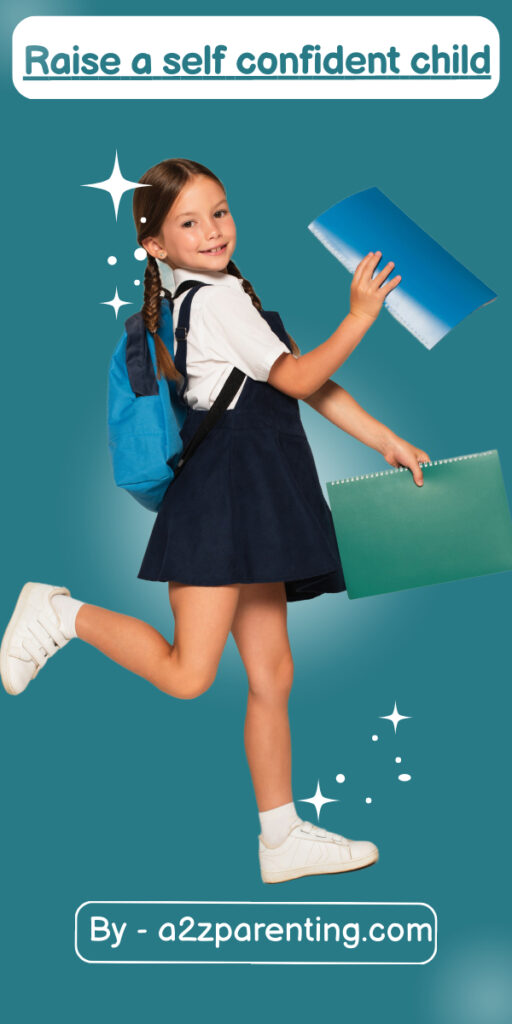
Raising a self-confident child involves creating an environment that fosters their sense of worth, competence, and independence.
Strategies to help you raise a self-confident child
Unconditional Love and Acceptance: Show your child love and acceptance regardless of their successes or failures. Make sure they know that your love is not based on their achievements.
Encourage Autonomy: Allow your child to make age-appropriate decisions and choices. This helps them develop a sense of control and independence.
Praise Effort, Not Just Results: Focus on praising the effort your child puts into tasks, rather than solely the outcome. This teaches them that hard work is valuable.
Set Realistic Expectations: Set achievable goals that match your child’s abilities and developmental stage. This helps them experience success and build confidence.
Provide Opportunities for Mastery: Give your child opportunities to learn new skills and experience success. Mastery of tasks boosts their self-esteem.
Celebrate Achievements: Celebrate both small and big achievements in your child’s life. This reinforces their sense of accomplishment.
Model Self-Confidence: Demonstrate self-confidence in your own actions and decisions. Children often learn by observing their parents.
Encourage Positive Self-Talk: Teach your child to use positive and empowering language when talking about themselves.
Teach Problem-Solving: Help your child develop problem-solving skills by letting them find solutions to challenges. This builds their confidence in their ability to handle situations.
Provide Constructive Feedback: Offer feedback that is specific and focused on improvement, rather than criticism. Encourage your child to learn from mistakes.
Support Interests: Encourage your child to explore their interests and passions. This helps them develop a sense of competence and identity.
Value Individuality: Emphasize that everyone is unique and has their strengths. Celebrate your child’s individual qualities and talents.
Foster Resilience: Teach your child to bounce back from setbacks and failures. Resilience contributes to a strong sense of self.
Create a Safe Space for Expression: Let your child express their thoughts and feelings without judgment. This builds their self-esteem and communication skills.
Teach Empathy: Help your child understand and empathize with others’ feelings. This boosts their social skills and self-awareness.
Encourage Risk-Taking: Support your child in trying new things, even if they might fail. Learning to handle failure positively is a key part of self-confidence.
Positive Body Image: Promote a healthy body image by focusing on health and well-being rather than appearance.
Encourage Perseverance: Teach your child that challenges and setbacks are part of life, and encourage them to persevere through difficulties.
Remember that building self-confidence is an ongoing process. Tailor your approach to your child’s individual personality and needs. Be patient and consistent in your efforts to create a supportive and nurturing environment that helps your child develop a strong sense of self-worth.
FAQ’s about how to raise a self-confident child ?
Certainly, here are some frequently asked questions (FAQs) about raising a self-confident child:
Q. What is self-confidence in children, and why is it important?
Ans. Self-confidence in children refers to their belief in their abilities and worth. It’s crucial because it contributes to their overall well-being, helps them face challenges, and builds resilience.
Q. How can I boost my child’s self-esteem from a young age?
Ans. You can boost your child’s self-esteem by providing love, encouragement, and opportunities for them to succeed. Praise their efforts, show interest in their activities, and provide a secure and supportive environment.
Q. What role does praise play in building self-confidence?
Ans. Praise, when used effectively, can boost self-confidence. It’s important to praise effort and specific achievements rather than offering empty or overly general compliments.
Q. Should I shield my child from failure and disappointment to protect their self-confidence?
Ans. No, failure and disappointment are part of life and can be valuable learning experiences. Encourage your child to face challenges and teach them how to handle setbacks constructively.
Q. How do I help my child develop resilience?
Ans. You can foster resilience by teaching your child problem-solving skills, encouraging a growth mindset, and providing support and guidance during difficult times.
Q. Is it okay to set high expectations for my child’s achievements to motivate them?
Ans. Setting high expectations is fine as long as they are realistic and achievable for your child’s age and abilities. Unrealistic expectations can lead to stress and erode self-confidence.
Q. What are some signs that my child may be struggling with low self-confidence?
Ans. Signs of low self-confidence can include social withdrawal, avoiding challenges, self-criticism, a fear of failure, and seeking constant approval.
Q. How can I help my child develop a positive self-image and body confidence?
Ans. Encourage a healthy lifestyle, focus on health rather than appearance, and provide a positive body image by avoiding negative comments about body size or appearance.
Q. Is it ever too late to work on improving my child’s self-confidence?
Ans. It’s never too late to work on improving self-confidence. Children, like adults, can continue to develop their self-esteem throughout their lives.
Q. What should I do if my child faces bullying or peer pressure that affects their self-confidence? –
Ans. Provide emotional support, teach them coping strategies, and communicate with school authorities or relevant parties to address bullying or peer pressure issues.
Q. How can I balance building self-confidence with teaching humility and empathy?
Ans. Teach your child that humility and empathy are important qualities. Encourage them to be considerate of others and to recognize that everyone has strengths and weaknesses.
Q. Are there any resources or books I can use to learn more about raising a self-confident child?
Ans Yes, there are many books and online resources available that provide guidance on raising self-confident children. Some popular titles include “The Self-Esteem Workbook for Teens” by Lisa M. Schab and “The 7 Habits of Highly Effective Teens” by Sean Covey.
Remember that raising a self-confident child is an ongoing process, and it’s important to adapt your approach to your child’s individual needs and personality.
Tags – Self-Confidence, Parenting Tips, Child Development, Positive Parenting, Building Self-Esteem, Resilience, Self-Efficacy, Confidence-Building Activities, Parenting Skills, Child Psychology, Self-Confident Kids, Emotional Development, Parenting Strategies, Nurturing Self-Esteem, Encouraging Independence, Developing Confidence, Positive Reinforcement, Parent-Child Relationship, Healthy Self-Image, Communication Skills,
Parent teacher meeting agenda

Parent teacher meeting agenda
The conference starts with a warm greeting and agenda
Initially when the conference begins, teacher welcome with greetings, and they keep thoughts and information, so that to appear prepared and organized. while explore about parent teacher conferences 2023, or parent teacher meeting agenda. Words and information used or presented as have little weight. Additionally, one need to focus and make reminder that parent – teacher have a common goal and that is to help the child.
Parent Teacher Conference Strategies
Many students do not require annual parent-teacher conferences after elementary school for all students. Therefore, when a secondary school teacher meets with parents for a conference, it is usually a question of whether the student in question is struggling academically, practically, or both. In reality, a parent-teacher conference can have a huge impact on student functioning and behaviour. This list focuses on helping to prepare themselves for these often difficulties conferences.
Be aware – Parent teacher meeting agenda
Use best listening skills in the conference. Let the one talk without interruption. Make eye contact and keep your body language open. Don’t jump on the defensive. Active listening techniques can help with this. If one is upset, other can validate this feeling by saying something like, “I understand you are upset about this situation. What can we do to help child be more successful? Huh?” This ensures that the conference remains focused on the child. Remember that sometimes people just want to feel that they have been heard.
Start and end on a positive note
It’s nice to say something about the student in question. For example, as to say something about –
Creativity, handwriting, sense of humor etc.
Also, at the end of the conference, try to wrap things up on a positive note. Instead of repeating problems which already discussed, end with a comment that shows hope for the future. As to say something like, “Thanks for meeting with me today I know that working together we can help (child name) succeed.”
Too many shortcomings of children or criticism over talks, prevents parents from coming to the meeting, so the teacher should treat the children equally. Only then will the confidence of the children remain. Parents are not able to tolerate the lack of their children by someone. So after the meeting is over, the teacher should talk to the parents and both should find a solution to this problem together.
Being an education expert, the teacher is expected to give the right advice for the progress and development of the child. It is important to maintain this belief. However, in PTM teachers must personally interact with the parents of 40-50 children in a day. In such a situation, the teacher tries to settle it as soon as possible.
It needs to be changed. Parents should call on separate days in small groups. This group should be made based on the performance of the children and their grades.
Importance of Parents Teacher Conferences or parent teacher meeting agenda
PTM is very important for the development of the child,
So parents must go and the teacher should also answer every question from the parents of the children with humility and patience. Children should be made aware of both the good and the bad.
It is also important for the teacher to listen carefully to the parents. Then give some feedback, because every problem has a solution.
Whatever the shortcomings in the child at the educational level, it is also necessary to try to overcome it by making efforts from both sides. Despite having such good objectives, teachers and parents are not very excited about PTM. We take it as a mere formality. Keeping in mind the kind of environment in which today’s children are living, it has become necessary for the parents to know everything about their child by meeting the school teacher
What is child deficiency and how to overcome it?
In PTM, you also meet the parents of your child’s friends. With this, you can take some valuable parenting tips from those parents too. From time to time, sit with the children and take a leisurely check whether they have any kind of problem.
If there is any problem related to the school, then definitely talk to the teacher about it. Also find out from the teacher whether your child is disciplined or not. They will give you some tips to be disciplined with the child and teach him discipline.
Parental understandings during parent teacher meeting agenda
If your child is not doing well in school, talk to the teacher openly about it and ask for a solution. If your child interacts with other children and the teacher in the class or if he is sitting quietly in some corner, then you will get the answers to all these important questions in this parent-teacher meeting only.
If you have any complaint with the teacher, then you can solve it right here. Some children prefer to just read books more than write, while some just remember things very well. And teachers know everything about their students. Get this information from them.
Some parents feel that their child is doing very well in school, so why do they need to go to PTM? But some things related to your child’s development are known only after going to school, so you should go to PTM to know every progress of your child. The main purpose of interaction between parents and teachers is to make children self-reliant. To share things with each other related to his personality and to know his shortcomings.
While selecting the school, we should keep in mind whether the selected school helps the student to advance at the global level or not.
Responding to a query, exploration says – that the time has come to establish such schools so that the child does not depend only on the guidance of the teachers. Parents and teachers should also be partners in his all round development. Parents should also have direct knowledge of the creativities, cleverness, imaginations, ingeniousness, innovativeness etc. So, that both school teacher and the parents can play their important role in the mental development.
The school should meet the standards of material resources of the 21st century, which is a great requirement in the modern education system. On an occasional basis an exhibition should organized by the students of the school. The admin and management team of the school, termed the science exhibition as a children’s Fairley progressive report and congratulate children.
Giving information about the continuous efforts being made by the educational centres with the aim of improving the versatility of the girl students along with studies, specifically appealed to all the parents to motivate the girl students to participate in the educational activities conducted in the school and college.
Academic instructor said that collective participation of teachers, parents and students is necessary for the educational development of the students and for the up-gradation of the institution, which is possible only through mutual dialogue, interview, contact and cooperation among them.
Key aspects to explore about parent teacher conferences
- Parent-teacher conferences are meetings held between parents or guardians and teachers to discuss a student’s academic progress, behavior’s, and overall development. These conferences play a crucial role in fostering effective communication and collaboration between parents and teachers to support the child’s education. Here are some key aspects to explore about parent-teacher conferences.
- Frequency: Parent-teacher conferences are typically scheduled once or twice a year, depending on the school’s policy and the age of the students. Some schools may have additional conferences if there are specific concerns or special circumstances.
- Preparation: Parents and teachers often prepare for the conference by reviewing the student’s academic work, test scores, and behaviors’ in class. This preparation helps ensure that the discussion is focused and productive.
- Discussion Topics: The conference may cover various topics, such as academic performance in different subjects, study habits, social interactions, behaviour, attendance, and extracurricular activities.
- Goal Setting: Parent-teacher conferences provide an opportunity to set academic and behavioural goals for the student. Collaborative goal setting helps create a shared commitment to the child’s progress and success.
- Open Communication: Both parents and teachers should feel comfortable sharing their observations, concerns, and questions during the conference. It is essential to maintain open and respectful communication.
- Student Involvement: In some cases, especially with older students, the child may also participate in the conference. This inclusion can foster a sense of responsibility and ownership of their education.
- Follow-up: Parent-teacher conferences are not a one-time event. It is vital to follow up after the conference to track progress toward the set goals and address any ongoing concerns.
- Special Education Conferences: For students with special needs, there may be individualized education program (IEP) meetings or other specialized conferences to discuss specific accommodations and support.
- Language Access: Schools should provide interpretation services if needed to ensure that non-English speaking parents can fully participate in the conference.
- Supporting Teachers and Parents: Conferences offer teachers a chance to understand the child’s home environment better and for parents to learn about the school’s expectations and curriculum.
- Privacy and Confidentiality: Both parents and teachers should respect the privacy of the discussions during the conference and refrain from sharing sensitive information with others.
Overall, parent-teacher conferences are valuable opportunities for parents and teachers to collaborate in the best interest of the child’s education and holistic development. Effective communication and partnership between parents and teachers can significantly impact a student’s success in school.
FAQ’s about Parent teacher meeting agenda
Q1: What is the purpose of a parent-teacher meeting agenda? A:- The agenda serves as a roadmap for the parent-teacher meeting, outlining the topics to be discussed and ensuring that important aspects of the student’s academic and social development are covered.
Q2: Who creates the parent-teacher meeting agenda? A: Typically, the teacher or school staff will create the agenda, but parents may also have the opportunity to suggest specific topics they would like to discuss.
Q3: What topics are commonly included in a parent-teacher meeting agenda? A: Common topics include academic progress, strengths and weaknesses, behavior in the classroom, study habits, social interactions, extracurricular activities, and setting academic or behavioral goals.
Q4: How is the parent-teacher meeting agenda shared with parents? A: The agenda is usually shared in advance of the meeting through email, a printed copy sent home with the student, or posted on the school’s online platform.
Q5: Can parents request specific items to be added to the agenda? A: Yes, parents can usually request specific topics to be included in the agenda to ensure that their concerns or questions are addressed during the meeting.
Q6: How much time is typically allocated for a parent-teacher meeting? A: The duration of parent-teacher meetings can vary, but they typically last between 15 to 30 minutes. However, some schools may allow for longer meetings if needed.
Q7: What should parents do if they cannot attend the scheduled parent-teacher meeting? A: If parents cannot attend in person, they should communicate with the teacher to arrange an alternative meeting time or explore the option of a phone or virtual conference.
Q8: Are parent-teacher meetings only for discussing issues or concerns? A: No, parent-teacher meetings are also an opportunity to celebrate the student’s achievements, growth, and positive behavior in the classroom.
Q9: Can students be involved in the parent-teacher meeting? A: In some cases, especially with older students, they may be invited to participate in the conference. Including students can promote a sense of responsibility and ownership of their education.
Q10: Can the parent-teacher meeting agenda be adjusted during the meeting? A: Yes, the agenda can be flexible. If certain topics require more time for discussion, adjustments can be made to ensure all important matters are addressed.
Q11: Are parent-teacher meetings confidential? A: Yes, parent-teacher meetings are generally considered confidential. Both parties should respect the privacy of the discussions and avoid sharing sensitive information with others.
Q12: How often are parent-teacher meetings held? A: Parent-teacher meetings are typically scheduled once or twice a year, but some schools may offer additional conferences or progress updates as needed.
Q13: Can parents bring additional family members or support to the parent-teacher meeting? A: Yes, parents can bring additional family members or support if they believe it will be beneficial for the discussion and support of the student’s education.
Q14: What should parents do after the parent-teacher meeting? A: After the meeting, parents should follow up on action items discussed, monitor their child’s progress, and maintain open communication with the teacher throughout the school year.
communication between parents and teachers, discuss the social and emotional skills, Explore about parent teacher conferences 2022, family involvement in children’s education, information and questionnaires about your ward, ongoing home school communication, opportunities to share progress with parents, parent teacher meeting agenda, staple of school life, update on academic progress of your ward, #ParentTeacherMeeting, #PTM, #MeetingAgenda, #ParentTeacherConference, #SchoolCommunication, #StudentProgress, #AcademicPerformance, #SocialDevelopment, #BehaviorInClassroom, #SettingGoals, #EducationPartnership, #StudentAchievements, #StudyHabits, #ExtracurricularActivities, #PositiveBehavior, #SupportingEducation, #StudentGrowth, #SchoolEngagement, #AcademicSupport, #SchoolUpdates, #EducationCollaboration, #EffectiveCommunication, #StudentWellBeing, #SchoolInvolvement, #ParentalInvolvement, #SchoolPartnership, #EducationMeeting, #SchoolMeetings, #SchoolCommunication,
Child career planning and development 2022
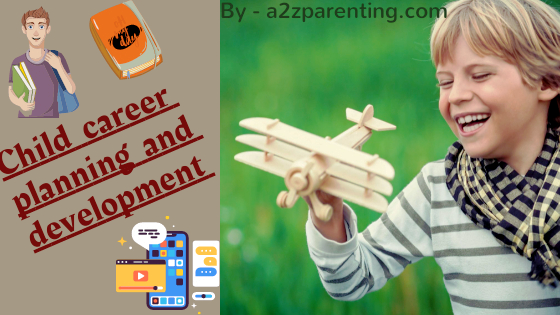
All about Child career planning and development 2022
All aspects of an adolescent’s behavior are linked to their wish to achieve, belong and to have control or choices. Although all three are interlinked. Initially as a say about – “Child career planning and development 2021” than it’s includes – achievements, and it’s further illustrated with different case studies and consequently illustrated a specific problems relating to achievements.
It is important that academics and policy makers are able to understand the intricacies behind career planning and its relationship to academic performance and human development. Mostly students follow an unusual approach to setting their career goals. Many a times, driven by the aspirations of the parents, students mix their career plans with education, resulting in no clue of career options.
Some students utilize their time in school and the choice of subjects available to them based on their academic performance to gain career options. This approach often leads to limited options. Still other students begin to think about their career options when their interest is ignited by a high school counselor, teacher, or a person who is supposed to be a role model. It also means being exposed to limited options.
What does child need to achieve ?
Generally as I say about current generation, In average children needs and wants to achieve their own unique identity, physical and cognitive growth, well being and capacity, social and emotional skills and also a level of performance in relation, which combinedly make them to feel successful and that fulfills their potentials as much as possible.
On above of all, towards the end of adolescence, children want to achieve some economic and practical independence and to be increasingly confident as they exercise this. Obviously parents also wants their children to have a sense of achievement and their own agendas may include aspects of their work, past, current and future, aspects of an economic nature, material possessions such as cars and property, holidays, sports, hobbies and of course their own parenting. This can sometime results in conflicting priorities within the family.
There’s a huge amount going on on this simplified scenario. Perhaps it sounds quite intractable but actually, viewing it from a positive psychology perspective, there are many possibilities for helping to improve the situation. Whichever model of adolescent development you base your under- standing upon, certain strong themes leap out Sporting achievement is intrinsic to the whole family’s self-worth and is highly valued.
- Child chosen field of excellence, represents new ground to family and one in which alone has achieved skills and experience.
- Children demonstrated discipline, hard work and resourcefulness in passion for working and achieved some success.
- In quest for excellence child compromised with physical health and well- being
- Children impressed people in specified circle and accessed social and emotional support that has not been available at home
While preparation of modules regarding All about Child career planning and development 2021, Initially focus on building the ambition national practice guidance on early stage works well.
Children entering elementary school today will eventually end up working in an entirely new type of job that does not yet exist. Many of the careers and professions we see in today’s job market didn’t even exist 10, or even 5 years ago. Due to rapid advances in robotics, driverless transportation, artificial intelligence, biotechnology, advanced materials and genomics, it is about to change and grow rapidly.
Be prepared for the possibility that they don’t have much to say preliminary and if so leave it and return to a later date. You can rest assured that a subject of this nature will register with them but they may need time, days, weeks or even months before they have thought it through enough to have much to say. All of the models of adolescents developments are useful and relevant for understanding these younger situations. I have italicized key points from different theories within the case studies.
For better understanding, parents try to think about your own teenager’s and their priorities in term of achievement and t hen think about their. How much, if any, overlap is there
Defining key Indicators – A major shortcoming of our policy making process has been that relevant indicators have not been properly defined for assessing outcomes related to development.
The pace of physical development is very rapid in the prenatal period and the first 6 months after birth. From 7-8 months after birth, the pace of physical development starts slowing down and continues at a uniform rate for about 12 years. At the age of 12 to 15/16, the pace of physical development once again accelerates.
Psychologists have called this Puberty Growth Spurt. After this, there is a slowdown in the pace of physical development of the children till the attainment of full maturity. At this stage, their physical development reaches the height that it maintains till old age. The weight just keeps on increasing.
How do I plan my child’s career? What is career planning and development?
Why is career important for kids? What are the areas of career development?
Career planning, Career development, What is career planning ?, Career plans example, Career management.
Educational experts provide assessment and recommendations to improve curriculum planning, individual lessons, and teaching methods at one or more grade levels. They also help coordinate and communicate expectations and progress between students’ parents/guardians, guidance counselors and teachers.
There are many job prospects with any chosen career but students are not well aware of these opportunities. For example, an engineering career can lead to becoming a scientist, product manager, designer or an entrepreneur. The primary reason for this chaos is that students are being directed through their schooling to fit into an education system, not to think critically and plan their careers. When in school, students’ aspirations may differ. It may not be possible for them to pinpoint a particular career.
Child career planning
- Talk to your child about their values and what is important to them in a career – This will help them narrow down their options and focus on a career that is in line with their personal beliefs.
- Introduce your child to different cultures and perspectives – This will help them become more well-rounded and adaptable, which are valuable qualities in any career.
- Be a role model for your child – Show them what it means to be a hard worker, a good communicator and a team player.
- Help your child develop their skills and knowledge – This may include encouraging them to participate in extracurricular activities, participate in internships, or volunteer their time.
- Be patient and understanding – Career planning takes time and effort. Don’t be discouraged if your child’s plans change or they don’t know what they want to do right away. Just keep providing them with support and guidance, and they will eventually find their way.
It’s important to remember that career planning is an ongoing process. Your child’s interests and goals may change as they get older, so be prepared to adapt your plans accordingly. The most important thing is to provide your child with the support and guidance they need to make informed decisions about their future career.
Here are some additional tips :-
- Understand your child’s interests and strengths – What are they passionate about? What are they good at? What do they like to do in their spare time? Once you have a good understanding of your child’s interests and strengths, you can start exploring career options that suit them
- Encourage your child to explore various career options – There are many different careers out there, and it’s important for your child to explore their options and find something they’re really interested in. You can help by talking to them about different careers, taking them to career fairs, and meeting people in different occupations. In doing so by encouraging them to get involved can help them.
- Teach your child the importance of setting goals – Setting goals and planning ahead are essential aspects of career planning. Help your child set some short-term and long-term goals for their career, and then help them develop a plan to achieve those goals.
- Provide exposure to the corporate world – If possible, try to give your child some exposure to the corporate world. This could include taking them on a job with you, having them intern at a company, or connecting them with people working in different industries. This will help them understand what it is like to work in a professional setting and make informed career decisions.
- Support your child’s study area – If your child decides on a particular area of study, be supportive and help them achieve their educational goals. This may include helping them pay for tuition, providing them with study materials, or simply being there to provide encouragement.
Many students want to cure cancer, fight hunger or reduce pollution; They dream of designing vehicles, studying the universe, starting their own company and/or serving humanity. Each of these ambitions is valid, valuable, and flows logically from education based on aptitude and personality type.
Ironically, most of their aspirations get bogged down in educational goals and end up on a career path that may not be the most suitable.
For example, an engineer, a medical professional, or a member of a research team can do this to cure cancer. One should not have all these degrees, but should have a specific career path based on merit and personality.
We all know that it becomes easier to achieve career goals if one makes a career plan with well defined tasks. Furthermore, I have found that if students plan their careers based on talent, they achieve success on time, be happy and adapt to challenges in the world of work.
Remember, career planning and development for children should be approached with care and flexibility, considering their interests, passions, and strengths while allowing room for exploration and growth.
Early Years educational toys
Guidance on early years educational toys
During child growth and development every child has right to physical, emotional and mental progression. Initial activities are as mainly parents play games and educating through rhymes is a supportive start. Furthermore entertainment, sports, education and cultural activities helps in developing along with personality as best of it’s abilities.
Educational toys (also called “instructional toys”) are play objects, usually designed for children, that are expected to encourage learning. They are often intended to fulfill an ‘educational’ purpose such as helping a child develop in a particular skill or teaching a child about a particular subject. They often simplify, shorten or model the activities and objects used by adults. Although children are constantly interacting with and learning from the world, many of the objects they interact with and learn from are not toys.
Toys are generally considered to be made specifically for the use of children. A child can play and learn with a rock or stick, but it would not be considered an educational toy as.
- It is a natural object, not a designed object.
- It has no expected educational purpose.
The difference lies in the perception or reality of the intention and value of the toy. An educational toy is expected to educate. It is expected to instruct, promote intellectuality, emotional or physical development. An educational toy should teach the child about a particular subject or help the child develop a particular skill. More toys today than ever before are designed with a child’s education and development in mind.
Intelligent toys.
According to the current market review’s – An artificial intelligence along with robotic technology become more adorable, due to which it has been incorporated into a wider range of children’s toys. Not only because it provide new interactive experiences, it also extend the life of more traditional toys with online features.
The Sphero Robot ball is a good example. It’s a ball that can power itself around a room with gyroscopes and motors. It can be played interactively or operated from the respective smartphone app. By delivering and responding to motion it provides a range of educational experiences, from learning colors and math to developing a basic understanding of programming. This is the “Big Track” of the modern era – for those who remember the program dump trucks from years ago.
For children, technology is a natural part of everyday life. The boundaries between what is connected to the Internet and what is a traditional toy or gadget are ever more blurred. Understanding the benefits, costs and data implications of connected toys and wearable gadgets is an important aspect of parenting. While children often quickly understand how these things work, they need guidance on how to use them in a safe and healthy way.
Early Childhood Educational development toys is not only the first step in the ladder of education, but it is also an important foundation for primary education. Now as a stage of education at the global level, Child is being considered to be extended till the age of 8 years, because from the point of view of child development it has been seen that children in the age group of 6 to 8 years are similar to their younger children in their needs and traits. And they require similar educational methods.
While specifying about Early years educational toys, It clarification as – Education is envisioned as an integrated, holistic program for children that includes provision for education, care, health and nutrition.
Three sub-stages have been identified within the period of –
- The early motivational stage for children aged three years or less (who require a home-based stimulating environment and care),
- Children between the ages of 3 to 8 years (who need a center-based early childhood with a holistic approach) education program is required) for the early childhood education stage.
- The early primary education stage for children between the ages of 6 and 8 years.
Early childhood education main objectives –
First is all round development of children through appropriate program of play based activities, interactions and experiences (which will provide a solid foundation for lifelong learning and development) from the point of view of age development. to promote,
Secondly such special. School-readiness in children through a variety of concepts and skill-based activities
which will promote preparatory work to learn reading, writing and arithmetic before entering primary schooling to develop. This is not a program to formally teach these three basic skills. School-ready objectives are particularly suited to children between the ages of four and six, as by this age children are maturely ready for a more structured, play-based, learning environment.
Why children learn better with educational toys?
Anything by age that challenges gross motor, motor skills, building skills, basic foundation skills like sorting, numbering, classification is great. These basic building blocks help a child as they grow.
The imagination he has can be heard from the stories he has composed. How many new things the world would see if toys could help develop that imagination. Toys are a major source of channelizing energy that children have.
Things that children learn through toys include cause and effect, finger strength, dexterity, socialization, sharing, problem solving. Toys hone their imagination and help them identify great role models. Toys help children recognize and enforce healthy inter-personal relationships. Negotiation and conflict resolution are also some of the things that toys teach
Importance of educational toys during child development?
They’re designed to dress up a subset of information with bells and whistles so the child will stay focused on it. That prioritizes the educator’s idea of what’s important over the child’s developing stage. Educational toys are designed often to lay out a clear path to lead a child to draw the “right” conclusion. They aren’t set up to let the child explore what sparks their curiosity then take it in the direction that is most fascinating.
It’s important that children have lots of time to play freely. Play is how they figure out the world.
Some educational toys can be enjoyable. But don’t depend on “educational” than “noneducational.” A child may get more out of pulling a toaster apart, exchanging heads on their dolls, playing a for-fun video game, digging in the dirt than from a toy designed to be educational.
Nursing to feeding omissions and suggestions

Nursing to feeding omissions and suggestions
Having a baby is like entering a long tunnel. you can’t see the end and you wonder what you’ve gotten yourself into. You emerge five years later having had less sleep then you might have wished, but thinking it wasn’t that rough after all, difficult days become difficult to remember. As we learn “nursing to feeding omissions and suggestions” than child of infant care become easy.
Don’t worry if you don’t feel overwhelming love for your infant immediately. It often takes time, perhaps months, for real parental love as well as attachment to develop. Relax and enjoy the developing bond between you and your baby. Despite the newness of caring for your first baby, It won’t take you so long to become an old hand at baby care. Baby don’t arrive with attach instructions, but they do express their need.
Dressing sense for breastfeeding
Keep a cardigan sweater, scarf or receiving blanket handy for a quick covering. If you are concerned about modesty, unbutton your blouse from the bottom, or wear a cotton t-shirt or pullover that’s easily lifted up. Your baby’s head will cover your bare midriff, and the t-shirt will cover your breast.
Wear printed tops to make stains less visible if you leak . To prevent leaks from soaking through your bra cups, use soft handkerchiefs , three or four layers cut from an old undershirt, two-to-three-inch circles of terry clothes and stitched together, or a sanitary napkin or diaper cut to fit.
Half a panty liner may be all you need. Nursing pads and other commercial products are also available. Wear a stretch bra that can be lifted up for nursing. Some women buy nursing bras before they go to the hospital, getting a size larger (and a cup size larger) than what they wore during pregnancy, but this doesn’t work for every woman consider buying a bra extender in sewing notions department for extra ”give” you may need.
For more details relating to infant care, you may also visit my article on – Tips New born baby care after birth.
Breastfeeding tips for first time or beginner moms
Keep you baby awake and sucking by gently rubbing her cheek. Stop an older baby who bites while nursing by pinching your baby’s earlobe just hard enough to be a distraction. Experiment with various breast pumps, If possible, to find the one that works best for you.
If you are engorged and your baby isn’t ready to nurse, express some milk in a warm shower or bath, or place a warm compress on your breast before expressing milk. Some babies find it hard to settle down against slippery nylon or polyester. If you are wearing a shirt of either fabric, slip a diaper or receiving blanket between you and your baby.
While child rearing, parents also need to be concern about to childproofing home and environment before your child starts moving. If you baby falls asleep while nursing, change the diaper to make baby wake-up, during you are ready to change breast. When you want to stop nursing, put your finger in the corner of your baby’s mouth to break the suction and ease the infant off your breast.
Keep track of which breast you started on last time by transferring a safety pin from one bra strap to other. Or move a light weight expandable bracelet or fabric hair from one wrist to another. Few women use a ring that loose enough to transfer from hand to hand.
Breastfeeding tips for latching and comfort set-up for nursing
When nursing your baby on chilly nights , wrap up in a big blanket or get into a snuggle sack together. Or have a sweater or robe available. Your milk will flow better if you’re warm and cozy. Use a big pillow with arms, or a C-shaped nursing pillow, for breastfeeding in bed.
Some nursing pillows have Velcro straps that fasten around the mother’s back. Protect linens and blankets while nursing in bed by covering them with a crib-size waterproof pad. Place a thermos with a warm drink, or a sports bottle filled with a cool drink, near the area warm drink, or a sports bottle filled with a cool drink, where you’ll be feeding your baby, so you can have the drink you need. keep a few energy bars there, too.
Select a cushioned rocker, armchair, or sofa for nursing while sitting up. Choose one with low arms to rest your arms to rest your arms on, and put a pillow under your nursing arm for added support. If you’re thinking about buying a rocker, remember that a wooden one will be easier to clean than an upholstered one, though perhaps not as comfortable.
New born baby formula feeding guidelines
A baby’s food needn’t be warm, but it goes against the grain for some parents to serve up a cold bottle. While bottle feeding, a fancy electric bottle warmer isn’t necessary. Every time prior to feeding baby through bottle, test the temperature of the milk by squirting a drop on your wrist. If it feels comfortably warm, then it’s okay for baby. While it isn’t critical for development, some parents hold their baby in arm, to help the infant develop good eye muscle coordination.
Be extremely cautious when warming a bottle of formula in a microwave. Formula heats unevenly and can scald your baby’s mouth. Make sure to shake bottle until mixed very well and try testing on your wrist. If it is too warm, add more formula and vice-versa. Avoid heating expressed breastmilk in a microwave, since it may reduce anti-infective properties. Cool an over-warmed bottle by adding some cold milk or formula from refrigerator. While child upbringing, parents may also visit an important tips on Common illness/sickness and initial treatment.
Warm a bottle by standing it in a couple of inches of hot water in a bowl, pan, mug, or other container. Or run hot tap water over the bottle. Shake it occasionally to warm the contents evenly. Thaw a bottle of frozen breastmilk by letting it stand at room temperature until thawed, by running it under lukewarm water and gently turning (not shaking) the bottle, or by letting it sit in a pan of warm water.
Never thaw it in a microwave, as this may reduce anti-infective properties. Freeze expressed breastmilk in small amounts (two to four ounces) in clean glass or hard plastic bottles. allow some room for expansion during freezing. Mark the storage date and use before six months. Thawed breastmilk should be consumed within forty-eight hours. Freeze expressed breastmilk in an ice cube tray .(Each cube is about one ounce.) Store the cubes in a plastic bag, and mark the storage date.
Defrost the cubes in a liquid measuring cup and pour into a bottle. If you’re traveling and need to keep formula or breastmilk cold, put reusable, self-filled, plastic frozen ice balls in the bottles. they won’t dilute the formula or breastmilk. Or keep the bottles in a small cooler. If you want to take the chill out of a bottle when eating out, ask for a glass half-filled with hot water and place the bottle in the glass for a minute or more.
How often to sterilize and store baby bottles
Use your vegetables steamer basket to help clean or sterilize nipples, rings, and bottles. Open the steamer and turn it over to keep all the pieces under its umbrella in a pot of boiling water. While sterilizing bottles is no longer considered necessary, some parents like to use this procedure the first time they use the bottles or when their children are sick.
Don’t be afraid to wash bottles in the dishwasher, place then in a zip-up mesh bag like the ones used to wash pantyhose, or use a plastic basket designed for this purpose. Clean nipples and glass bottles by boiling them in water in a glass jar in the microwave. A teaspoonful of vinegar in the water will prevent hard water deposits in the jar. Use denture cleaner tablets to clean glass baby bottles.
let the bottles soak for half an hour according to directions. Swish with a bottle brush and rinse. Rinse out empty bottles as soon as possible, or you’ll find “cottage cheese” in them later. If you don’t have a bottle brush, put warm water and some dry rice in the bottle, and shake to scrub out milk rings. To get rid of a sour-milk smell, fill the bottles with warm water, add a teaspoon of baking soda, shake well, and let stand overnight.
Remove juice stains by putting baking soda and warm water in the bottle and scrubbing with a bottle brush. If you don’t have a bottle brush, use a pastry brush or something similar. Clean bottles by putting a dab of toothpaste on your bottle brush and just enough water to scrub them clean. Wash dirty bottles before going to bed at night, and fill them with the proper amount of water so they’ll be ready for night time or next day mixing.
For an even flow :- Regulate the flow of formula by loosening the bottle collar if the flow is too slow, or tightening it if the flow is too fast. Enlarge nipple holes, if necessary, by inserting toothpicks and boiling the nipples for three minutes, or by sticking a very hot needle into the nipple for few times. If the hole is too big, toss the nipple and start using the extras you bought.
To prevent powdered formula from lumping, put the powder in first, then add water. Cap the bottle and pinch the nipple shut, and shake vigorously. Or use a wire whisk and warm water to help dissolve formula more easily. Eliminate air from bottle with disposable liners by pressing up on the liner until the liquid reaches the tie of the nipple.
This allow your baby to drink in an upright position. Have your older baby use bottle straws inserted into traditional nipples. Formula will flow evenly no matter what position the bottle is in.






Recent Comment